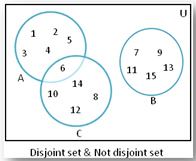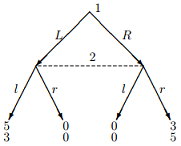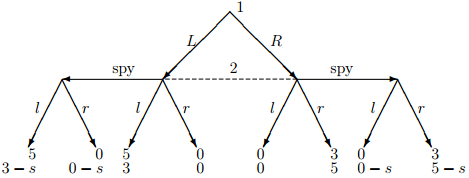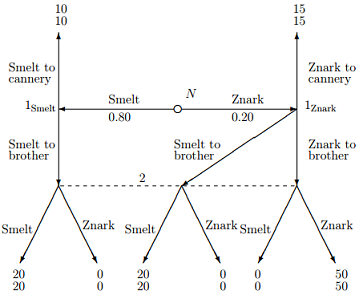Reference no: EM131116242
Homework 2- Micro III - Spring 2007
1. Mary, through hard work and concentration on her education, had managed to become the largest sheep farmer in the county. But all was not well. Every month Mary faced a 50% chance that Peter, on the lam from the next county for illegal confinement of his ex-wife, would steal some of her sheep. Denote the value of her total flock as w, and the value of the potential loss as L, and assume that Mary is a expected utility maximizer with a vNM utility function
u(w) = ln w.
a. Assume that Mary can buy insurance against theft for a price of p per dollar of insurance. Find Mary's demand for insurance. At what price will Mary choose to fully insure?
b. Assume that the price of insurance is set by a profit maximizing monopolist who knows Mary's demand function and the true probability of loss. Assume also that the only cost to the monopolist is the insurance payout. Find the profit maximizing linear price (i.e. single price per unit) for insurance. Can the monopolist do better than charging a linear price?
2. A potential consumer of insurance faces an initial risky situation given by the probability distribution ν, with ν([0, +∞)) = 1. The consumer has a von Neumann-Morgenstern utility function, u, on [0, +∞), and u is strictly concave. The consumer faces a large, risk neutral insurance company.
a. Explicitly make whatever assumptions on ν and u that you think necessary, and find the set of Pareto optimal allocations of risk between the consumer and the insurance company.
b. Now suppose that ν puts mass on only two points, x and y, x > y > 0. Also, the distribution ν depends on their own choice of safety effort, e ∈ [0, +∞). Specifically, assume that νe(x) = P(e) and νe(y) = 1 - P(e).
Assume that P(0) ≥ 0, P(·) is concave, and that P'(e) > 0. Assume that choosing safety effort e costs C(e) where C'(e) > 0 if e > 0, C''(0) = 0, C''(e) > 0, and lime↑+∞ C'(e) = +∞. Set up the consumer's maximization problem and give the FOC when insurance is not available.
c. Now suppose that the consumer is offered one of the contracts you found to be Pareto optimal in the first problem, but that their effort e is not observable by the insurance company. Find the consumer's optimal choice of actions.
d. How might a deductible insurance policy partly solve the problem you just found with the consumer's reaction to a contract that is Pareto optimal in the first part of this problem?
3. The police arrest a man and accuse him of a crime. Given the police department's record, there is a prior probability ρ, 0 < ρ < 1, that the man is guilty, ω = g, and a (1-ρ) probability that the man is innocent, ω = i. The man will be tried in front of a jury of M people. These M people will cast random, stochastically independent votes, Vm = G for guilty and Vm = I for innocent, m = 1, . . . , M with probabilities
P(Vm = G|ω = i) = p, P(Vm = G|ω = g) = q, 0 < p < ½ < q < 1.
Suppose that social utility depends on the innocence or guilt of the defendant, ω = i, g, and the jury's decision, V = I, G, and

a. Consider the unanimity rule for the jury, "Convict only if all jurors return a guilty vote," i.e. V = G if V1 = V2 = · · · = VM = G, and V = I otherwise. What are P(V = G|ω = g), P(V = I/ω = g), P(V = G|ω = i), and P(V = I|ω = i)?
b. Show that decreases in p and increases in q are unambiguously good for society.
c. Consider again the unanimity rule for the jury and treat M ≥ 1 as a continuous variable. If juries are costless, set up and solve for the optimal M∗, being careful about the boundary and the second order conditions.
d. Assuming that the optimal M∗ in the previous problem is strictly greater than 1 (an interior solution), find whether or not ∂M∗/∂ρ is positive or negative and interpret.
e. For given M, which may or may not be the optimal jury size for the unanimity rule, when will the unanimity rule be socially optimal?
4. A large population is divided into two types, L and H. People know their types. Type L is α of the population, H is 1-α. Type L has a probability p of having an accident, H has a probability q, 0 < p < q < 1. For type L the cost of recovering from the accident is c, for type H the cost is C, 0 < c < C. In other respects, the types are identical risk averters with income w and strictly concave von Neumann-Morgenstern utility functions u(·).
a. Give C-, the expected per capita cost of recovering from the accident, in terms of the above parameters.
b. A single payer hospital system can pool the risk across the whole population and make 0 profit. Show that the H types will always prefer population wide pooling while the L types may or may not prefer it.
c. Show that for low enough p and q, both types will prefer population wide pooling to no pooling.
d. Suppose that there is a genetic marker for types that can be identified at 0 costs. Show that both types would prefer pooling across their own type to no pooling at all, but that one of the types would prefer pooling across the whole population to pooling by type.
e. In terms of maximizing population wide ex ante (that is, before type is known) expected utility, which is better, pooling across the whole population or pooling across types? Briefly explain your answer.
Some background for and extensions to this problem: For the U.S. population as a whole there is roughly a 0.5% chance of contracting cancer in any given year. Women, 51% of the population, have roughly a 0.4% chance, while men, 49% of the population, have roughly a 0.6% chance. Women's hospital stays for cancer average roughly 7 days, men's hospital stays roughly 8.5 days (this may be for cultural rather than medical reasons - women have a reputation of being tougher). The problem does not consider survival probabilities being less than 1. Death rates from cancer are much higher for older people, slightly higher for middle aged women than for middle aged men, and much higher for older men than for older women. Pooling by age is another possibility in the above problem. The problem also does not consider that access to medical care differs between groups.
5. If the manager of a firm puts in a low effort, eL, profits are distributed over [0, 1] according to the density f(x|eL) = 1.5 - x, if he puts in a high effort, eH, profits are distributed over [0, 1] according to the density f(x|eL) = 1. The owner, being too busy with a variety of takeover bids, cannot observe the effort of the manager she has hired, but she can observe the resultant profits. The manager's possible outside wage is 1/100, and his von Neumann-Morgenstern utility function is u(w, e) = √w-v(e) where v(eL) = 0 and v(eH) = v, v > 0.
a. Show that profits conditional on eH first order stochastically dominate profits conditional on eL. [Nothing tricky here.]
b. Find the best wage schedule, w(π), for the owner to offer the manager if she wishes to implement eL, and find the owner's associated profit.
c. Find the shape of the best wage schedule, w(π), for the owner to offer the manager if she wishes to implement eH.
d. In terms of v, find the owners optimal, profit-dependent wage schedule w(π). [This will depend on which effort level the owner wants to implement.]
e. Show that if the manager is risk neutral, the optimal contract effectively involves the manager becoming the residual claimant.
6. The owner of a chicken processing plant makes $1,000,000 per year from his chicken processing plant, and w > 0 per year from other sources. He notices that a total of $30,000 worth of chickens per year are being taken home by his 100 employees to supplement their minimum wage living standards (approximately $6 per week per employee). These chickens are being taken out through the fire safety doors, so the owner is considering nailing and chaining the doors shut permanently. This is against the law because sealing fire doors kills people in the event of a fire. The probability of a fire is 0.01 per year (one percent per year), and, given the state of the fire safety system at the plant, if a fire breaks out, it will entirely destroy the plant. If a fire breaks out and the doors are sealed, it will be discovered that the owner sealed the safety doors, and the owner will have to pay $F = 700, 000 worth of fines and legal fees. The owner's twice continuously differentiable Bernoulli (or von Neumann-Morgenstern) utility function is u(x) where x is the owner's income this year, and the owner cares only about x.
a. If u(·) satisfies risk neutrality, E X > E Y implies E u(w + X) > E u(w + Y ) for all w. Give a condition on the derivatives of u(·), satisfied by some strictly risk averse u(·)'s, guaranteeing that for all sufficiently large w, E X > E Y implies E u(w + X) > E u(w + Y ). Explain.
b. Suppose that the owner is strictly risk averse. Give conditions on the derivatives of u(·) with the property that, once his pockets are deep enough (i.e. once w is sufficiently large), he'll seal the doors.
c. Suppose now that F is not 700, 000. Give the smallest value of F for which you can guarantee that a strictly risk averse owner will not seal the doors.
7. The monsoons will come at some random time T in the next month, T ∈ [0, 1]. A farmer must pre-commit to a planting time, a. As a function of the action, a, and the realized value of T, t, the harvest will be

where K > r, s > 0. The random arrival time of the monsoon has cumulative distribution function F(·), and f(x) = F'(x) is its strictly positive probability density function.
A reminder from calculus: if G(a) = g(a)∫h(a)?(a, t) dt, then
dG(a?)/da = -h'(a?)?(a?, h(a?)) + g'(a?)?(a?, h(a?)) + h(a?)∫g(a?)(∂?(a?, t)/∂a) dt.
a. Verify that for any t ∈ [0, 1], h(·, t) is concave.
b. Suppose that the farmer is risk neutral and let V (a) = E h(a, T). Show that the solution to the problem maxa∈[0,1] V (a) is the interior point a∗ = a∗(r, s) satisfying F(a∗) = r/(r + s). Find ∂a∗/∂r and ∂a∗/∂s and give their signs.
c. Suppose now that the farmer is risk averse, that they want to pick a to maximize Ψ(a) = Eu(h(a,T)) where u is twice continuously differentiable, strictly increasing, and strictly concave. Show that Ψ(·) is strictly concave, that the solution to the problem maxa∈[0,1] Ψ(a) is an interior point a†(r, s). Find expressions for ∂a†/∂r and ∂a†/∂s and give their signs.
d. Let us return to the case of a risk neutral farmer, but suppose now that the farmer's precommitment is not total. Specifically, at any point in time τ ∈ [-1/10 , 1], the farmer, if she has not already decided to plant, can decide to plant at a = τ + 1/10, that is, there is a (roughly) three day lag between deciding to plant and actually having the job done. Find the farmer's optimal policy as a function of r and s.
8. Achieving coordination is often crucial. One way to achieve coordination in two person strategic situations is to have one player "spy" on the other. This problems asks you to examine the implications of the possibility that one player may choose to expend the effort to spy on the other in a two person coordination game. The specific coordination game to be considered is

With the spying option, the game is altered so that player 2 can, before making their choice, pay a utility cost of s > 0 and learn what 1 has done. Specifically, the game is

a. Find the three equilibria and associated utilities for the game without spying.
b. How many pure strategies does player 2 have in the extensive form game with spying? What is the dimension of 2's space of mixed strategies? What is the dimension of 2's set of behavioral strategies?
c. In the game with spying, show that it is not an equilibrium for 2 to spy with probability 1 no matter how cheap spying is, i.e. for any s > 0.
d. In the game with spying, find all three equilibria and their expected payoffs when spying is quite expensive, i.e. s > 15/8.
e. In the game with spying, find all three equilibria and their expected payoffs when spying is relatively cheap, specifically, when s = 1.
9. Every day, the older of two brothers goes out fishing. Most days, he catches only Smelt, but one day out of every five (on average), his nets will also catch a Znark. Znarks, as everyone knows, are a prized delicacy that will spoil if kept on the same boat as Smelt. If he catches only Smelt, he has two choices, take them to his brother to sell, or take them to the cannery. If he catches a Znark, he has three choices, toss it back in the water and take the Smelt to his brother, toss the Smelt back and take the Znark to his brother, or take the Znark to the cannery.
Meanwhile, not knowing what older brother will catch and bring home, the younger brother needs to figure out his marketing strategy - he can claim that he will have Smelt, or he can claim that he will have Znark; no-one would ever believe the claim that he has both. If he makes one claim and his brother arrives with the other kind of fish, the customers abandon him. The customers for Znark will pay much more than the customers for Smelt, and the cannery pays less than marketing the fish oneself, hence the payoffs below. (Older brother is labelled as player 1, younger as player 2, and N is Nature. Further, as everyone knows, canned Znark is vastly inferior to fresh Znark.)

a. Give the normal form strategy sets for this extensive form game.
b. Find the pure strategy equilibria for this game.
c. Show that the equilibria you found above are sequential.
d. Now suppose that the brothers buy a ship-to-shore radio so that the younger brother knows both what's been caught and his brother's plans before he needs to choose his marketing strategy. Change the game tree given above to reflect this, and solve for the sequential equilibrium(a) of this new game.
10. The quality of a good takes the values 1 and 2 with probabilities 1-q and q, respectively. The seller knows Q, the potential buyer does not. A good of quality Q breaks at time T, where T is a random variable distributed uniformly on [0, Q]. A buyer receives a utility of 2 each moment he has the good before it breaks. Thus, if she purchases the good for price p and it breaks at time T, his utility is 2T - p and the seller's is p. Both their payoffs are 0 if no trade occurs.
Suppose that the seller can sell the good with a warranty. The warranty is characterized in terms of a date D: if the good breaks before date D, the warranty commits the seller to donating the purchase price p to penguins' flood relief in Antarctica. This donation does not directly affect the buyer's utility, but it does affect the seller's: her net utility is 0 if the good breaks before D.
The seller makes a take-it-ot-leave-it offer (D, p). The buyer then accepts or rejects, whereupon the corresponding payoffs are realized.
a. What is the expected utility of the seller if she sells a good of quality Q for price p and warranty D?
b. Draw the indifference curves of the two seller types that correspond to utility 1 in (D, p) space. (Put D on the horizontal axis.) Is the single crossing property satisfied?
c. What is the maximum warranty length in a pooling perfect Bayesian equilibrium?
d. What are the restrictions on the warranties that the two seller types offer in any separating PBE?